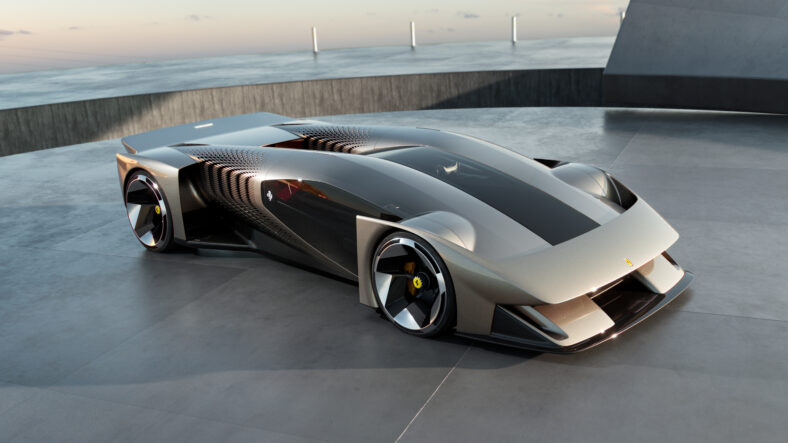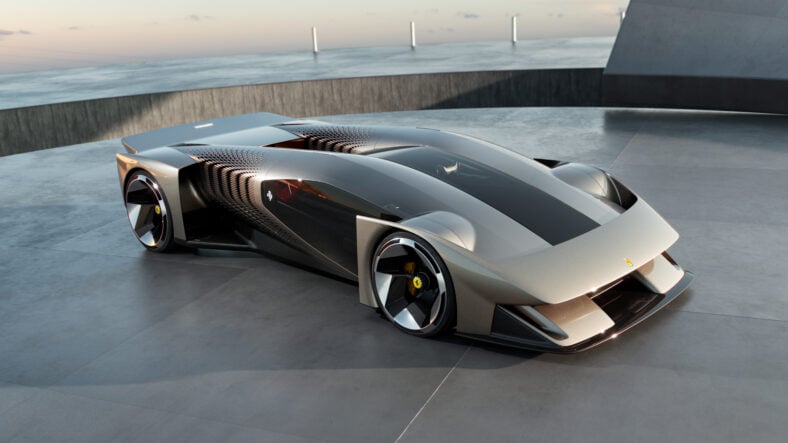
Ferrari’s trio of consecutive victories at Le Mans has inspired another historic feat for the preeminent marque: its first digital hypercar. Following a 50-year absence, Ferrari returned to the world’s most prestigious endurance race in 2023 with the 499P prototype, a carbon-structured technical marvel featuring a 296-derived 3.0-liter twin-turbo V6 combined with a front electric motor that together produce a maximum of 680 horsepower at any given time, per FIA regulations.
In that year, Le Mans’ centenary, the 499P earned Ferrari its first overall win since 1965. In 2024, the factory car had triumphed again at the 8.5-mile Circuit de la Sarthe, while in 2025, a privately purchased 499P won it for a hat trick, allowing Ferrari to join fellow consecutive Le Mans-three-peaters Toyota and Audi in keeping the 24K gold trophy permanently.
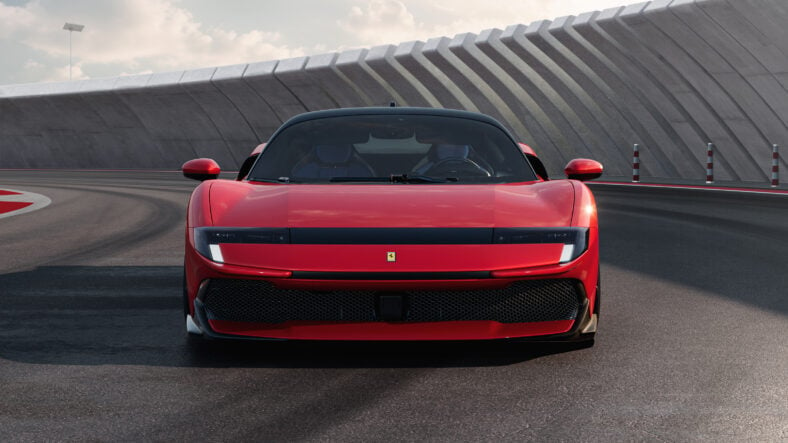
In name, the F76 seen here harks all the way back to when the Touring-bodied 166 MM barchetta became the first Prancing Horse to win Le Mans 76 years ago in 1949. But in form, the F76 aims to “prefigure the shapes of Ferraris of the future…. where form, function and performance merge as a single organism.”
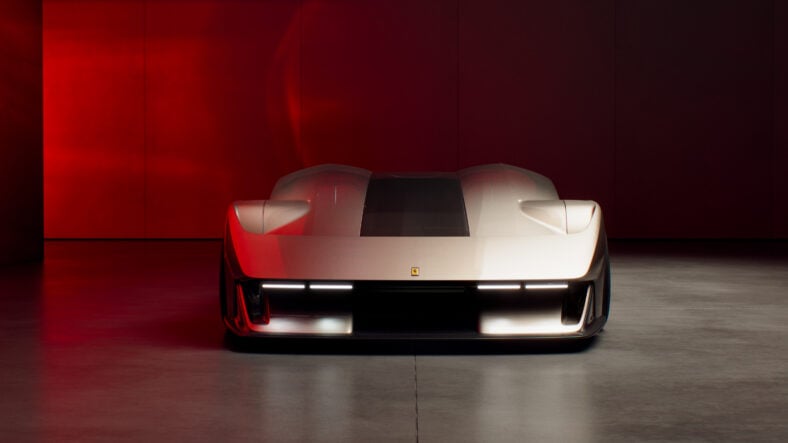
Created by the Ferrari Styling Centre led by Flavio Manzoni, the F76 isn’t a racer. There are separate driver and passenger cells, which create the distinctive “double fuselage” shape, conceived in “a quest for maximum purity in airflow management.” The design allows for a central underbody channel that effectively turns the car’s body into a ground effect-creating wing. The sides feature one of the only elements shared by extant Ferraris—the vertical cuts the recall those found on the flagship F80. Follow the 3D livery superimposed on these cuts to the central area between the driver and passenger cells to find lateral louvres, a signature Ferrari feature found on the 250 series, the 296 Speciale, and many others in between.
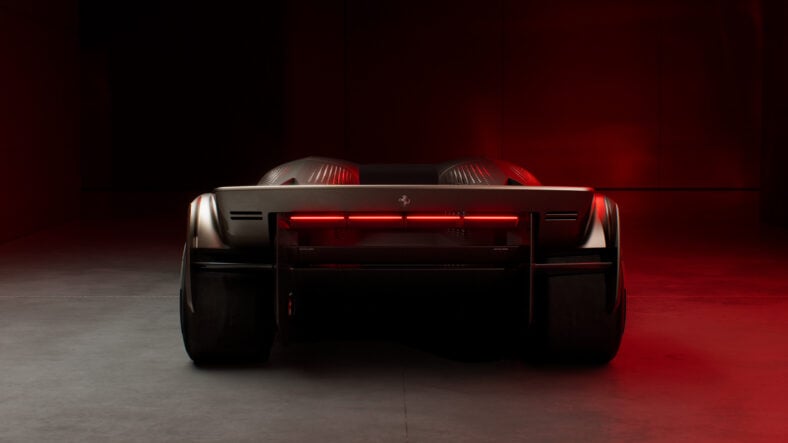
The front also extrapolates on the F80, taking the floating splitter found on the latest in Ferrari’s Supercar lineage to an extreme with a band suspended between the wings. The two pairs of retractable headlights, positioned laterally under the suspended band, represent the link between the legacy of Ferrari’s 1970s and ‘80s pop-up headlights and the futuristic character of the F76.
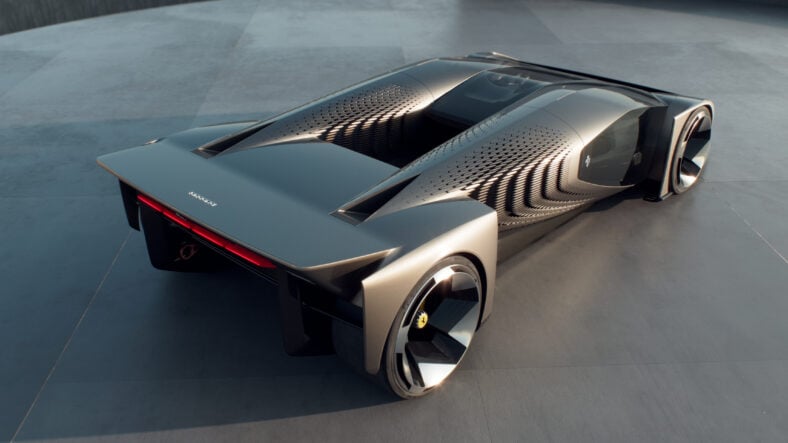
Meanwhile, the unique tails of the passenger/driver cells help aid in optimal cooling, while the rear features two vertical profiles that are sculpted exactly to the vehicle’s track width. Four iconic taillights are integrated into the wing, eliminating the need for any weight-adding or line-interrupting fixtures.
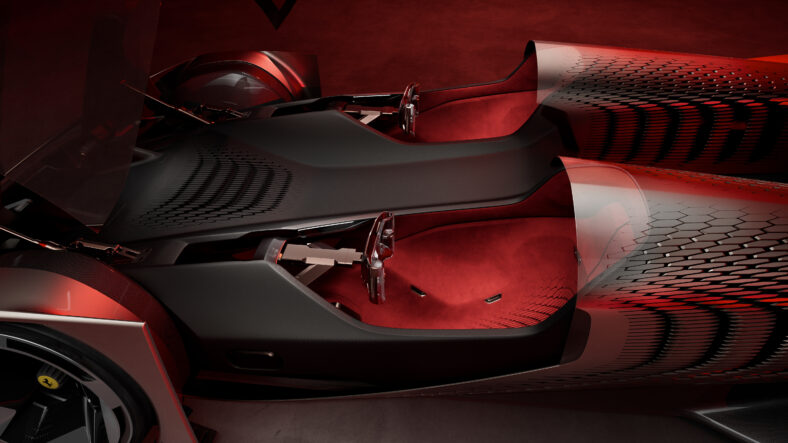
The interior may be the most forward-thinking feature. Per Ferrari, “Two separate cockpits, utilizing drive-by-wire technology, synchronize every driving component, from the steering wheel to the pedals, allowing both occupants to experience and share sensations in real time, elevating both the emotional and technical participation in the driving experience.”
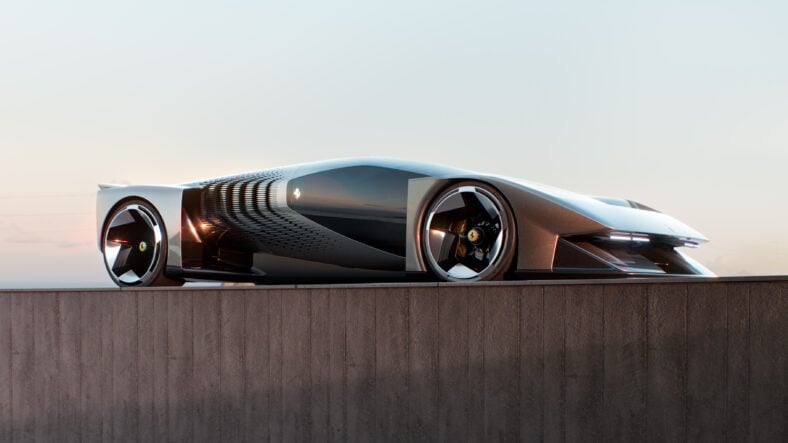
While tempting to think of the F76 as a concept, it’s actually a non-fungible token (NFT) that was designed for clients of Ferrari’s Hyperclub program, which offers its most cherished clients extra access to facets of its endurance racing program, as well as tokens and smart contracts. If the F76 ever did exit the digital realm and enter the factory, we’re here for it.










